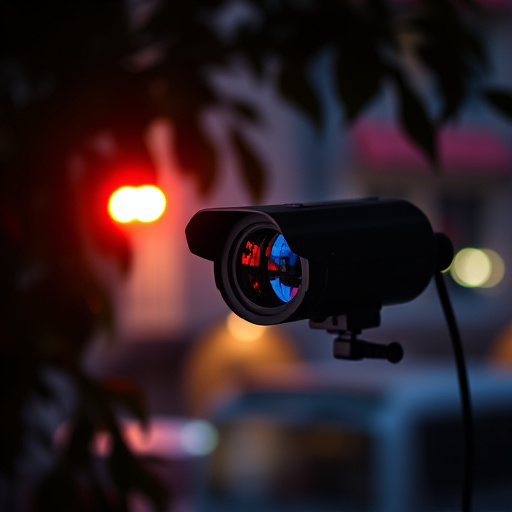Mini Spy Cameras face challenges in nighttime recording due to low light and ambient glint/glare, but advanced image processing algorithms can detect and minimize reflective surfaces, ensuring high-quality footage. Glint detection is crucial for enhancing the performance of these cameras during nighttime operations, making it valuable for surveillance, wildlife monitoring, and nocturnal photography. Efficient methods include analyzing pixel intensity and color information or integrating pre-trained machine learning models to automatically detect glints with high accuracy from various angles and lighting conditions.
Unveiling the secrets of Mini Spy Cameras and their nighttime recording capabilities is a fascinating journey into the world of enhanced vision. As these tiny devices gain popularity, navigating the challenges of low-light conditions becomes paramount. This article explores the critical role of glint detection in improving night vision, offering practical methods to implement this technique for optimal results. Discover how to conquer the darkness and capture clear images with our comprehensive guide.
- Understanding Mini Spy Cameras and Nighttime Recording Challenges
- The Role of Glint Detection in Enhancing Night Vision
- Practical Methods for Implementing Glint Detection in Nighttime Recordings
Understanding Mini Spy Cameras and Nighttime Recording Challenges
Mini Spy Cameras have revolutionized covert surveillance, offering compact and discreet recording solutions. These tiny devices are often used for home security, pet monitoring, or even in professional settings, thanks to their ease of deployment and hidden nature. However, when it comes to nighttime recording, Mini Spy Cameras face unique challenges. Low-light conditions make it difficult for the camera’s sensor to capture clear images, leading to grainy or poorly illuminated footage. Additionally, ambient light sources, like street lamps or interior lighting, can cause a phenomenon known as “glint” or “glare,” where bright spots appear on the recorded video, obscuring details and creating distractions.
Nighttime recording for Mini Spy Cameras requires specialized techniques to overcome these obstacles. The ability to detect and minimize glint is crucial for ensuring the quality of footage. Advanced image processing algorithms can help in this regard, analyzing real-time video feeds to identify and suppress reflective surfaces, allowing for clearer recordings even under bright lights. Understanding these challenges and employing suitable methods for glint detection can significantly enhance the effectiveness of Mini Spy Cameras during nighttime operations.
The Role of Glint Detection in Enhancing Night Vision
Glint detection plays a pivotal role in enhancing night vision capabilities, especially for miniature spy cameras designed for nighttime recording. By identifying and mitigating reflections from surfaces like streetlights or security lights, these advanced systems can deliver clearer, more detailed images in low-light conditions. This is particularly crucial for applications that demand high-quality footage during evening hours, such as surveillance, wildlife monitoring, or nocturnal photography.
In the context of mini spy cameras, glint detection algorithms analyze incoming video streams to isolate and suppress unwanted reflections, allowing for a more accurate representation of the night environment. This not only improves visual clarity but also extends the practical range of these devices, making them suitable for a broader spectrum of nighttime applications.
Practical Methods for Implementing Glint Detection in Nighttime Recordings
Implementing glint detection in nighttime recordings, especially with mini spy cameras, requires practical and efficient methods. One such approach involves utilizing advanced image processing algorithms that can analyze each pixel’s intensity and color information to identify reflective surfaces. These algorithms often employ edge detection techniques to pinpoint where light sources interact with objects, subsequently marking these as potential glints.
Another method is to integrate machine learning models, specifically trained on datasets of nighttime scenes, to automatically detect glints. This involves feeding the camera’s raw footage into the model, which learns to recognize patterns characteristic of glints from various angles and lighting conditions. Once trained, the model can be deployed in real-time, offering a highly accurate and automated solution for glint detection in mini spy cameras’ nighttime recordings.
Mini spy cameras, despite their compact size, present unique challenges when it comes to nighttime recording. By employing glint detection techniques, however, these obstacles can be overcome, leading to clearer and more detailed images in low-light conditions. The practical methods outlined in this article offer a promising approach for enhancing nighttime recordings, enabling users of mini spy cameras to capture high-quality footage even under the cover of darkness.
